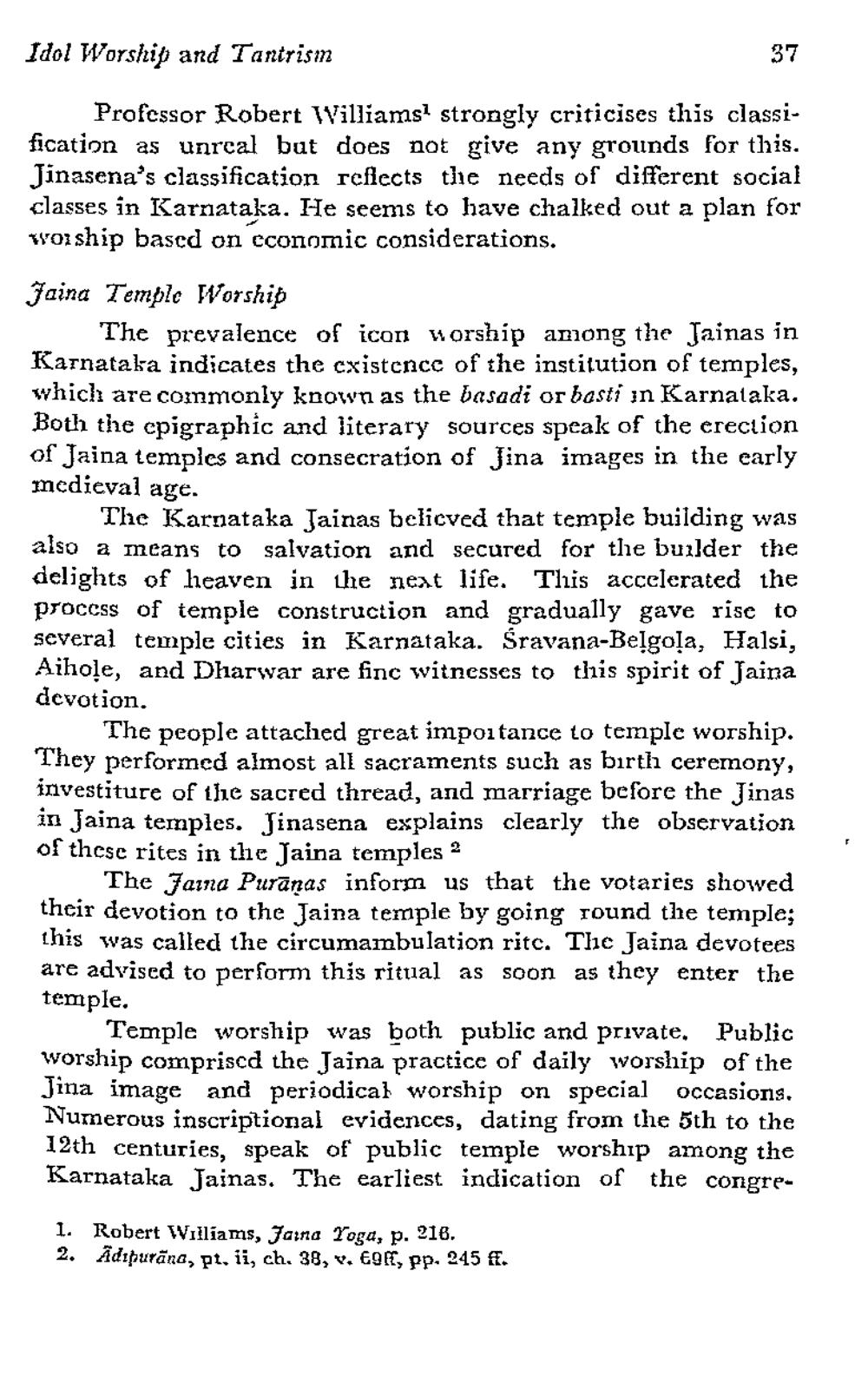________________
Idol Worship and Tantrisin
37
Professor Robert Williams strongly criticises this classification as unrcal but does not give any grounds for this. Jinasena's classification reflects the needs of different social classes in Karnataka. He seems to have chalked out a plan for worship based on cconomic considerations. Jaina Temple Worship
The prevalence of icon worship among the Jainas in Karnataka indicates the existence of the institution of temples, which are commonly known as the basadi or basti in Karnataka. Both the cpigraphic and literary sources speak of the crection of Jaina temples and consecration of Jina images in the early medieval age.
The Karnataka Jainas believed that temple building was also a means to salvation and secured for the builder the delights of heaven in the next life. This accelerated the process of temple construction and gradually gave rise to several temple cities in Karnataka. Sravana-Belgoļa, Halsi, Aihole, and Dharwar are finc witnesses to this spirit of Jaina devotion.
The people attached great impoitance to temple worship. They performed almost all sacraments such as birth ceremony, investiture of the sacred thread, and marriage before the Jinas in Jaina temples. Jinasena explains clearly the observation of thcsc rites in the Jaina temples 2
The Jaina Puranas inform us that the votaries showed their devotion to the Jaina temple by going round the temple; this was called the circumambulation ritc. The Jaina devotees are advised to perform this ritual as soon as they enter the temple.
Temple worship was both public and private. Public worship comprised the Jaina practice of daily worship of the Jina image and periodical worship on special occasions. Numerous inscriptional evidences, dating from the 5th to the 12th centuries, speak of public temple worship among the Karnataka Jainas. The earliest indication of the congre
1. Robert Williams, Jarna Yoga, p. 216. 2. Adipurāna, pt, ii, ch. 38, v. 69, pp. 245 ff.




